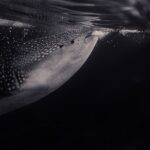In the case of killer whales, which are so difficult to track that the International Union for the Conservation of Nature considers that they do not have sufficient data to determine their conservation status, efforts are focused for the moment on the population of the sea of Salish, where it has been possible to record a decline of hundreds of copies to only 73 today.
Knowing the real-time location of whales in the sea , which could be key to protecting them from the traffic of ships and oil spills, has ceased to be a distant desire of conservation groups to become a reality thanks to the use of techniques of artificial intelligence.
Knowing where a group of cetaceans is at all times allows orders to be given to fishing vessels to avoid that area – thus preventing collisions and accidental catches -, center cleaning tasks after a black tide in the areas of most need or create protected areas in the spaces where they spend more time.
But, if it is already difficult to track animals on land, how is it possible to do so in the immensity of the oceans, with species that travel thousands of kilometers and that are extremely difficult even to censor?
The answer can be found in artificial intelligence.
A collaborative project between the NGO Rainforest Connection (which already uses artificial intelligence to fight deforestation in the Amazon), the Department of Fisheries and Oceans of Canada and Google has proposed to “monitor” the threatened population of killer whales in the Salish Sea, which bathes the shores of metropolis like Seattle and Vancouver.
“The logic is the same that we apply in the case of the Amazon. We use acoustic signals to locate the whales and transfer that information to the relevant authorities so that they can act accordingly,” explained the founder of Rainforest Connection, Topher White.
The acoustic signals are recorded at the bottom of the ocean by devices called hydrophones that are held by cables and have network infrastructure to send audios in real time to a server, from which they are transmitted to an artificial intelligence system.
Among the infinite hours and hours of audio, the artificial intelligence model is designed to detect whale songs, which, given the speed and long distance at which sound travels underwater, can be captured up to 50 kilometers away.
“Our job in this project is to teach artificial intelligence systems to detect, among all the variety of sounds captured in the ocean, specific species such as humpback whales or killer whales,” said Google AI product manager Julie Cattiau.
In the case of killer whales, which are so difficult to track that the International Union for the Conservation of Nature considers that they do not have enough data to determine their conservation status, efforts are focused for the moment on the population of the sea of Salish, where it has been possible to record a decline of hundreds of copies to only 73 today.
Responsible for capturing the sounds through a dozen hydrophones distributed in relatively shallow water areas is the Department of Fisheries and Oceans of Canada, which, just to teach artificial intelligence models, already provided programmers with 1,800 hours of audio submarine and 68,000 “tags” that identified the different sounds.
“It is clear that we will not be able to cover the entire ocean with these devices, but you can choose specific places that are important. For example, navigation routes are generally very well defined, and are of course a good place to go. the one to start, “said Matt Harvey, software engineer at Google AI.
With regard to humpback whales, the other species for which artificial intelligence models have been taught for the time being, monitoring is concentrated in the Hawaiian archipelago, and these represent an additional challenge, since the sounds that they emit are complex songs, with a great variety of vocalizations that even change over time.
Thus, perhaps unexpectedly for the general public, artificial intelligence has emerged as a useful tool to respond in the 21st century to which for decades it has been one of the most publicized challenges of the conservation movement: save the whales.
Discover more from TechResider Submit AI Tool
Subscribe to get the latest posts sent to your email.

